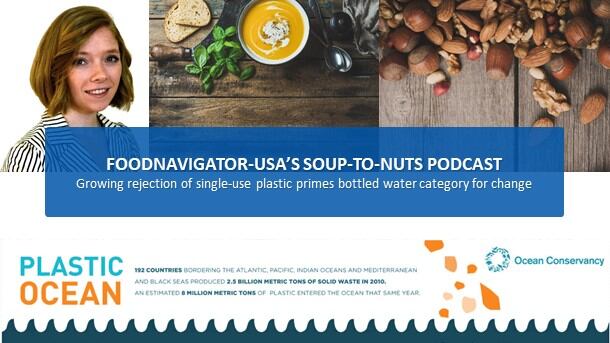According to Walker Sands Future of Retail 2018 survey of 1,600 US consumers, 78% of respondents said they purchased groceries in a physical store in the past year, which is significantly higher than the 11% who reported buying groceries from Amazon, the 7% who ordered online and picked up in store and 3% who tapped third-party delivery services, such as Instacart, to bring them groceries they purchased online.
Taking a step back, the report found only 6% of respondents said they prefer to buy food and groceries online – down from 11% last year. Similarly, if found the percentage of consumers interested in buying groceries online fell from 45% last year to 39% this year.
So, does this mean that retailers with predominately brick and mortar stores should slow their adoption of ecommerce or that online players should open-up store fronts on main street? According to Rachel Gulden, who is the account director for the retail technology team at Walker Sands, the answer is yes and no.
In this episode of FoodNavigator-USA’s Soup-To-Nuts Podcast, Gulden dissects how the evolution of ecommerce is influencing shopping online and in stores. She also addresses several challenges in each channel, and hints at the potential impact of emerging technology such as voice controlled devices.
What attracts consumers to stores?
More than ever before, Gulden explained, consumers are increasingly connected – whether it be through mobile devices that they always carry with them, computers they log onto near daily or voice activated assistants that welcome them in their homes and cars. And yet, most people, also want to unplug.
“Online shopping is growing in the retail space, and it will likely carry over to the grocery space as consumer comfortability continues to grow, but brands and retailers in the grocery industry in particular shouldn’t ignore the physical store,” Gulden said.
She predicts, “We are going to start seeing experiential grocery shopping becoming even more popular and important,” especially as younger consumers who are 18-25 years old embrace in-store shopping.
Such ‘experiences’ including offering beer and wine for shoppers to sip as they peruse the aisles, televisions to watch events with friends, moves to make paying easier with cashierless stores, Gulden said.
Gulden says other examples of how brick and mortar stores can use technology to improve shoppers’ experience is by leveraging mobile to make checking out of the store more convenient. However, she acknowledges, that may be easier said than done given than consumer adoption of mobile payment application “is still relatively thin.”
According to the Walker Sands’ report, only 10% of consumers have used the peer-to-peer payment application Venmo, only 12% have used Apple Pay and only 14% have used Facebook Messenger.
That said, Gulden says brick and mortar stores can leverage mobile to offer discounts, promotions and recommendations that are personalized to shoppers. She adds not everything has to be as high end or cutting edge as what Amazon can offer.
Online is still coming
Even as retailers refine their in-store shopping experience, they also need to improve their online experience because while adoption of ecommerce for food is slow, it is happening.
“What we are finding is that right now, in our survey, we saw 39% -- so nearly 40% -- of consumers say that they are at least somewhat likely to make an online grocery purchase in the next year,” and that is mainly due to the convenience it offers, Gulden said.
That said, Gulden warns online grocers have some substantial hurdles they still need to overcome, including consumer concerns about quality.
“There are unique challenges of buying fresh product online,” given that most people still want to touch, feel and smell produce before they purchase it, she said.
To help shoppers feel more comfortable buying fresh products online, Gulden predicts more grocers will double down on product information online, and could rely on emerging technology such as blockchain to share how fresh something is and how long it will last once it arrives at a shopper’s home.
Another major challenge for online shopping is convenient and fast delivery.
“Our data found that more consumers want and expect free shipping,” which is prompting many retailers and brands to bake that cost into the retail price, Gulden said.
She also noted that the rush to deliver products as fast as possible is straining the system, but doesn’t seem to be slowing down.
A third challenge – which also could represent an opportunity – is the rise of voice controlled devices and the role they will play in grocery shopping.
Gulden explained that most consumers are not comfortable purchasing groceries with voice controlled devices, yet, but that they use them in other ways to influence what they will buy, such as to make shopping lists or discover recipes. And to the extent that retailers and brands can become a part of consumers lives in that capacity, they will also be able to influence purchases across channels.
Put more bluntly, Gulden said the way consumers are using voice controlled devices shows that retailers and brands can no longer focus on ecommerce as solely a transactional tool – but that they also must use it to infiltrate consumers’ lives in other ways that might influence purchases at other times and channels.
In other words, stakeholders must adopt an omni-channel approach.
“If there is one thing that the report showed us this year, it is that branded retailers in a grocery space that focus on one channel exclusively, whether it is ecommerce or grocery or brick and mortar … aren’t going to be able to keep up with those that are more dynamic and offering services across a variety of different channels,” she said.
Gulden recommends that retailers, brand and other stakeholders zero in on who their main audience is and then leverage each channel to provide the type of experience that will optimize engagement and sales. This means using online for convenience and education and in-store for added experience and consumer engagement.




